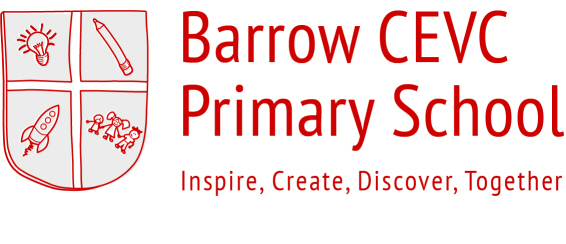

From a very early stage, children develop awareness of different sounds in spoken language. They develop an understanding that spoken words are made up of different sounds (phonemes) and they learn to match these phonemes to letters (graphemes). Phonics is about children knowing how letters link to sounds (graphemes to phonemes), for example, c as in ‘cat’, ll as in ‘fell’, or ee as in ‘sheep’.
Children use this phonic knowledge when they are reading and writing. This approach has been shown to provide a quick and efficient way for most young children to learn to read words on the page, fluently and accurately. We want children to develop this skill so that it becomes automatic. This also greatly helps them with their spelling.
At Barrow School, we use a phonics programme called Jolly Phonics when the children first start to learn phonics and we will group the children according to their phonic knowledge and ability into phases. These phases are set out through guidance that we follow called Letters and Sounds.
Letters and Sounds are divided into six phases, with each phase building on the skills and knowledge of previous learning. There are no big leaps in learning. Children have time to practise and rapidly expand their ability to read and spell words. They are also taught to read and spell ‘tricky words’, which are words with spellings that are unusual or that children have not yet been taught.
Helen Ashe
Headteacher